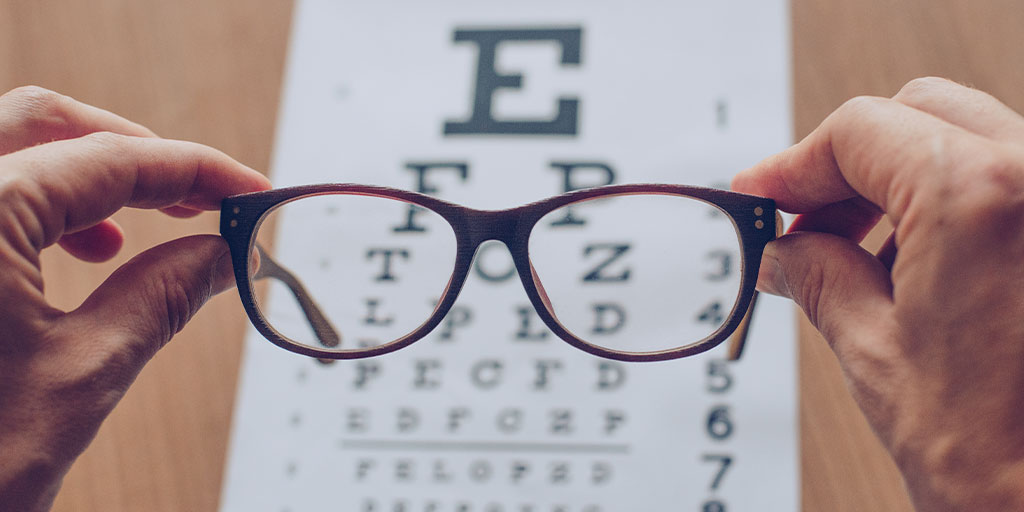How Progressive Lenses Have Advanced

Progressive lenses have become popular with our clients due to their seamless structure, flexible viewing, durability and low cost. At their core, progressives give you line-free multifocal glasses. You get a seamless progression from your lenses that deliver magnifying power at close and intermediate ranges.
Each lens changes gradually from point to point on the surface to provide the correct lens power for seeing clearly. This function alone solves a variety of vision issues commonly associated with traditional bifocals. Regardless, patients are often confused about the structure and function of progressive lenses. Below is a more in-depth look at progressives and whether they are right for you.
What Are Progressive Lenses?
As we age, our ability to see both close objects and objects in the distance can decrease. In the past, the solution for this condition was bi-focal lenses. However, bifocal lenses draw too clear a distinction between the viewing fields. Furthermore, they do not solve all vision problems in all situations because they only provide two options for near or distance viewing.
A progressive lens solves this problem. It allows multiple vision fields in a single lens without any clear distinction between the fields themselves. The power in the lenses progressively changes from far-to intermediate to your full reading power. It is why progressive lenses also have the name "no-line" bifocals or trifocals.
How Do Progressive Lenses Work?
Progressive lenses do not have a visible line separating the lens. Instead, they contain a seamless and gradual change in power as you move down the lens. Rather than two or three distinct zones (for near, far and intermediate), progressive lenses offer a smooth transition of focal powers that covers the total range of clear vision from close to far and every point in between.
Progressive lenses allow you to see at all distances with one pair of glasses. They start with your distance prescription (if you have one) at the top of the lens and increase as you move toward the bottom of the lens. You simply move your head position to allow you to focus through different areas of the lens. Move your head upwards to see something in the distance, hold it straight for intermediate or arm's length vision and down for near vision for objects that are close up.
Pros and Cons of Progressive Lenses
As unique as the lens itself, there are distinct pros and cons to progressive lenses.
Pros
- The design blends your prescription.
- You trade multiple pairs of glasses for a single pair.
- Progressive lenses may actually correct your vision to a degree.
Cons
- Sudden elevation changes can present challenges at first.
- Eye doctors must provide exact measurements for the lenses.
- Progressive lenses can cause peripheral distortion.
Types of Progressive Lenses
There are several options for progressive lenses which vary in style, price and function.
Standard Lenses
Standard progressive lenses must fit your vision needs. Your eye doctor can add them to frames of your choice, but you need to ensure that the frames are the right width and height proportions to grant enough space for the gradient changes in the lens. Otherwise, only a small area will remain for the distance or near vision zones.
Short Corridor Lenses
To overcome the issue mentioned above, progressive lenses are now called "short corridor" lenses made to fit into smaller frames to suit a wider range of eyewear styles.
Computer Lenses
Also known as "near variable focus lenses" or "office lenses," these specialized lenses are designed specifically for computer users and other occupations that require strong intermediate and distance vision. For computer users who work at a computer for many hours, these lenses will help reduce eye strain, eye fatigue, and other symptoms of computer vision syndrome that come from looking at a computer for extended periods.
Reading Lenses
Individuals who enjoy reading can opt for a pair of lenses with a larger close vision zone. Free-form lenses offer a customizable surface with a wider area for near vision.
Who Should Consider Progressive Lenses?
Almost anyone with a vision problem can wear progressive lenses. However, they are typically worn by people over age 40 who have presbyopia (farsightedness). Vision blurs when performing close-up activities like reading or sewing. Progressive lenses can be used for children, too, to prevent worsening myopia (nearsightedness).
4 Signs that you may need progressive lenses include:
- Activities that require a great level of detail vision at close distances become difficult.
- You spend several hours on the computer every day.
- A smooth vision is necessary for your job, environment or condition.
- You want a stylish look beyond standard bifocals.
The best way to determine if you need progressive lenses is to schedule an eye exam with your local eye doctor in West Florida.
Schedule an Eye Exam at Gulf Coast Vision Center
See your eye doctor to determine if progressive lenses meet your needs. To schedule an eye exam at Gulf Coast Vision Center, contact us at one of our five locations in Northwest Florida.
